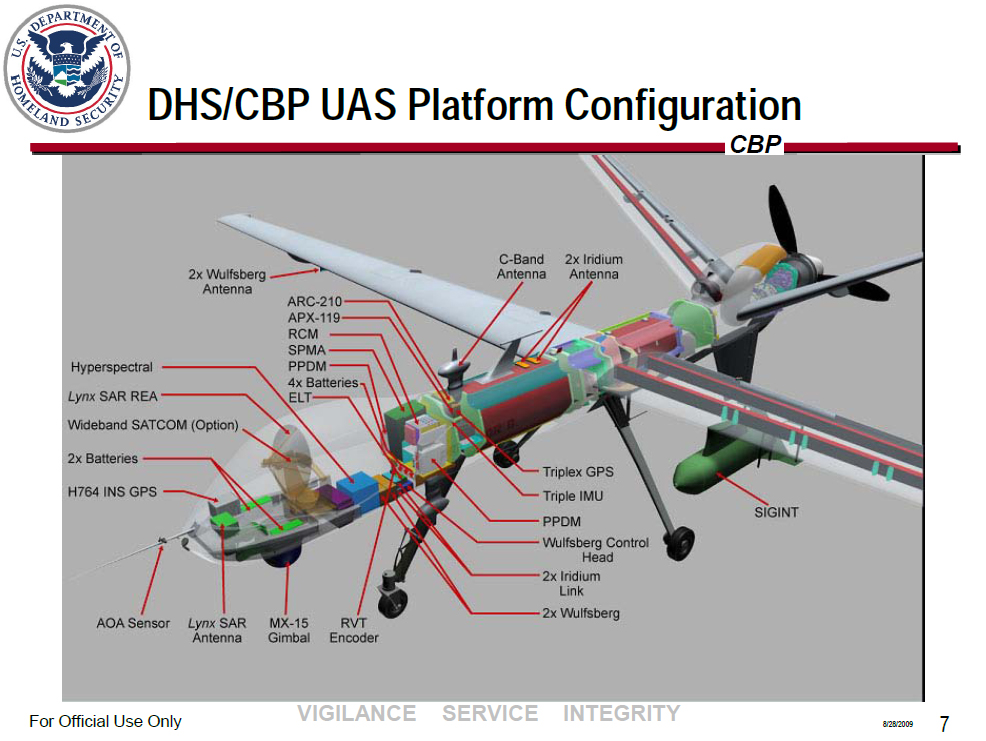Video: 'No evidence' costly drones help secure border, Inspector General says | 89.3 KPCC
DHS Inspector General John Roth called the drone program a "dubious achiever" and said it has fallen far short of being an asset to the effort to secure the nation's borders.
Roth said he sees "no evidence that the drones contribute to a more secure border, and there is no reason to invest additional taxpayer funds at this time."
Some of the Inspector General's findings:
- Drone surveillance was credited with assisting just 2 percent of illegal border crossers. In an audit of the apprehensions near Tucson, the drones assisted in just 2,000 of the 120,000 crossers captured by DHS.
- The actual cost of flying unmanned aircraft was far higher than the $2,500 per hour DHS reported: When pilot salaries and equipment costs were included the cost was $12,000 an hour.
OIG-15-17 - U.S. Customs and Border Protection's Unmanned Aircraft System Program Does Not Achieve Intended Results Dec14.pdf
What We Found
Although CBP’s Unmanned Aircraft System program contributes
to border security, after 8 years, CBP cannot prove that the program is
effective because it has not developed performance measures. The program has
also not achieved the expected results. Specifically, the unmanned aircraft are
not meeting flight hour goals, and we found little or no evidence CBP has met
its program expectations. We estimate it costs $12,255 per flight hour to
operate the program; CBP’s calculation of $2,468 per flight hour does not include
all operating costs. By not recognizing all operating costs, CBP cannot
accurately assess the program’s cost effectiveness or make informed decisions
about program expansion. In addition, Congress and the public may be unaware of
all the resources committed to the program. As a result, CBP has invested
significant funds in a program that has not achieved the expected results, and
it cannot demonstrate how much the program has improved border security. The $443
million CBP plans to spend on program expansion could be put to better use by
investing in alternatives.
What We Recommend
We made four recommendations
- conduct an independent study before acquiring more unmanned aircraft,
- lift the limitations on [VADER] radar sensor operations,
- establish attainable goals and performance measures, and
- gather and report all program costs.
CBP Response to OIG UAS Draft Report FINAL_0.pdf
CBP Response
CBP concurred with one recommendation and concurred in principle
with the remaining three recommendations.
U.S. Customs and Border Enforcement rejects much of the IG's report, saying the audit used faulty accounting.
US border agency halts UAS fleet expansion plans - 1/7/2015 - Flight Global
The US Customs and Border Protection (CBP) agency no longer plans to acquire 14 more medium altitude unmanned air systems and faces stinging new criticisms about the effectiveness of the current fleet of 10 aircraft.
The agency’s fleet – comprised of unarmed land and maritime surveillance versions of the General Atomics Aeronautical Systems Predator B – are so restricted by budget, operational and weather constraints that the aircraft have completed 22% of planned flight hours, according to the report by the Office of Inspector General (IG).
Moreover, an $8 million sensor – the Northrop Grumman vehicle and dismount and exploitation radar (VADER) – is not being used properly, says the IG report. Although VADER has detected thousands of suspected illegal immigrants after they have crossed the border, it is not being used by the CBP for the strategic purpose of tracing their routes back to where they crossed the border.
As a result, the IG recommends that the CBP invest $443 million on more useful purposes than expanding the UAS fleet to 24 aircraft.
 |
| Customs and Border Patrol UAS Predator-B |
 |
| Customs and Border Protection Drones |
LiveLeak.com - DHS built domestic surveillance tech into Predator drones
Previously
- spendergast: Northrop Grumman to Operate VADER Man-Hunting Radar for UAV in Afghanistan
- spendergast: Battle of the UAV Air Forces over Drug Trade in Mexico
- spendergast: CBP Unmanned Arial Vehicle (UAV)
No comments:
Post a Comment